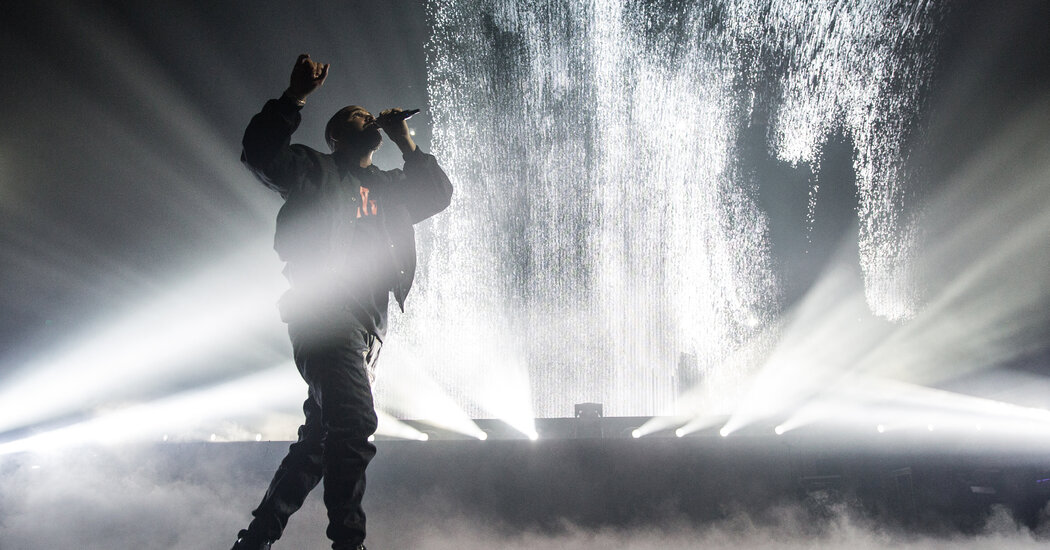
It’s the start of the winter term at Toronto’s Ryerson University, and most students are preparing for another semester of courses like mechanical engineering, economics and English literature. But 30 budding scholars will be studying what is perhaps a less traditional subject: the ins-and-outs of the hip-hop megastar Drake.
Song analysis, the state of the Canadian music industry and critical discussions over race, class, marketing and globalization are just some of the themes that will be broached on the course which began Wednesday and is called, “Deconstructing Drake and the Weeknd.”
Dalton Higgins, the lecturer teaching the course, told me that while Drake was a cultural titan born and bred in Toronto, Black artists more broadly were woefully absent in the Canadian music industry, a subject his course would explore. (The Weeknd is another Black, Toronto-born pop artist.)
“Now is an opportune time to get Canadian rap and R&B and pop icons recognized, and canonized academically,” said Mr. Higgins, who also works as a publicist and wrote a biography of Drake.
In the pantheon of Toronto’s global celebrities, a handful of names come to mind, like Keanu Reeves, Margaret Atwood and Dan Levy. Then there is Drake, a local hero and one-name figure like Cher or Madonna who has become so synonymous with Toronto that his presence is imprinted throughout the city.
It is perhaps fitting that Drake joins the ranks of other musical stars whose cultural meaning has been parsed at universities; Madonna, the material girl, has been part of courses at Harvard and U.C.L.A., among other places. The Drake course, which is part of the professional music program, has a long waiting list.
Councilor Michael Thompson, Toronto’s nightlife economy representative, told me that name-dropping Drake when trying to generate investment for the city was a surefire way to inspire applause, interest and buzz.
Aubrey Drake Graham was born in Toronto, the son of a white Jewish mother and a Black father with family roots in Memphis. His parents divorced when he was a toddler. He was raised by his mother in Toronto’s affluent Forest Hill neighborhood and has said he was often the only Black student at school.
A keen performer, he soon found his way into acting, and in the eighth grade he secured an agent who helped him land a role on “Degrassi: The Next Generation,” a reboot of a popular Canadian television series. His break in music came when the New Orleans rapper Lil Wayne invited Drake on a tour in 2008.
Full disclosure: I am a Drake fan, work out to his music, and like his sartorial swagger. As a first-generation Canadian, I identify with some parts of his me-against-the-world defiance, but I am mostly drawn by his flair for catchy music.
The students studying Drake need only drive into downtown Toronto for a crash course on the artist.
Traveling along the Gardiner Expressway — the elevated highway under which Drake filmed portions of the “What’s Next” music video, which was released in March — is a building emblazoned with his clothing brand’s golden owl logo. It’s the OVO Athletic Centre, a basketball training site that is home to the Toronto Raptors, which Drake represents as the team’s global ambassador. (OVO stands for October’s Very Own, after his birth month.)
Drake-seekers who arrive in the downtown core can then stop at Ripley’s Aquarium and ogle barracudas and jellyfish while soaking in the place where Drake famously courted Rihanna during their on-again, off-again romance. The nearby CN Tower is also a fixture in his music videos and on the cover of “Views,” his 2016 album, infused by dancehall rhythms, Afrobeat and grime.
Taking an exit off the Gardiner, would-be Drake scholars will eventually land on Yonge Street and pass the site of a failed, Drake-affiliated restaurant, Pick 6ix, which served up sushi and burgers. Sometimes stylized as “6ix,” the Six is a nickname he popularized for Toronto, an allusion to the city’s 416 and 647 area codes and its six boroughs, which were amalgamated into a single city in 1998.
Students who swerve around the notorious Toronto potholes that Drake raps about will arrive at Dundas Square, Toronto’s equivalent of Times Square. There, the aggressive glow from billboards that frequently promote Drake will light their path into Ryerson University, which now features the rapper on its curriculum.
Like many people there, Mr. Higgins referred to Ryerson as X University. The institution is undergoing a renaming process following protests over the man it’s named for, Egerton Ryerson, who was a key figure in crafting Canada’s residential school system.
Such is Drake’s mark on Toronto that a 2020 “Saturday Night Live” sketch, starring Issa Rae, featured a news reporter trying to find an elusive Drake in the city.
“You know where I’m at, I put the Six on the map,” Drake raps on his track “Talk Up,” one of the countless references to Toronto in his music. Though Toronto has piggybacked on the glittering Drake brand, the city can’t take credit for his stardom as a homegrown talent, Mr. Higgins said.
“Toronto did not make Drake, like, at all,” Mr. Higgins told me, adding that the same holds true for the Weeknd and some of the city’s other successful hip-hop artists. They, he observed, started their careers in the United States, signing contracts with American record labels and with the support of the American music industry and its fans. Only then did their popularity and stardom eventually trickle back to Toronto.
Trans Canada
Vjosa Isai joined The New York Times as a Canada news assistant in June. Follow her on Twitter at @lavjosa.
How are we doing?
We’re eager to have your thoughts about this newsletter and events in Canada in general. Please send them to nytcanada@nytimes.com.
Like this email?
Forward it to your friends, and let them know they can sign up here.




